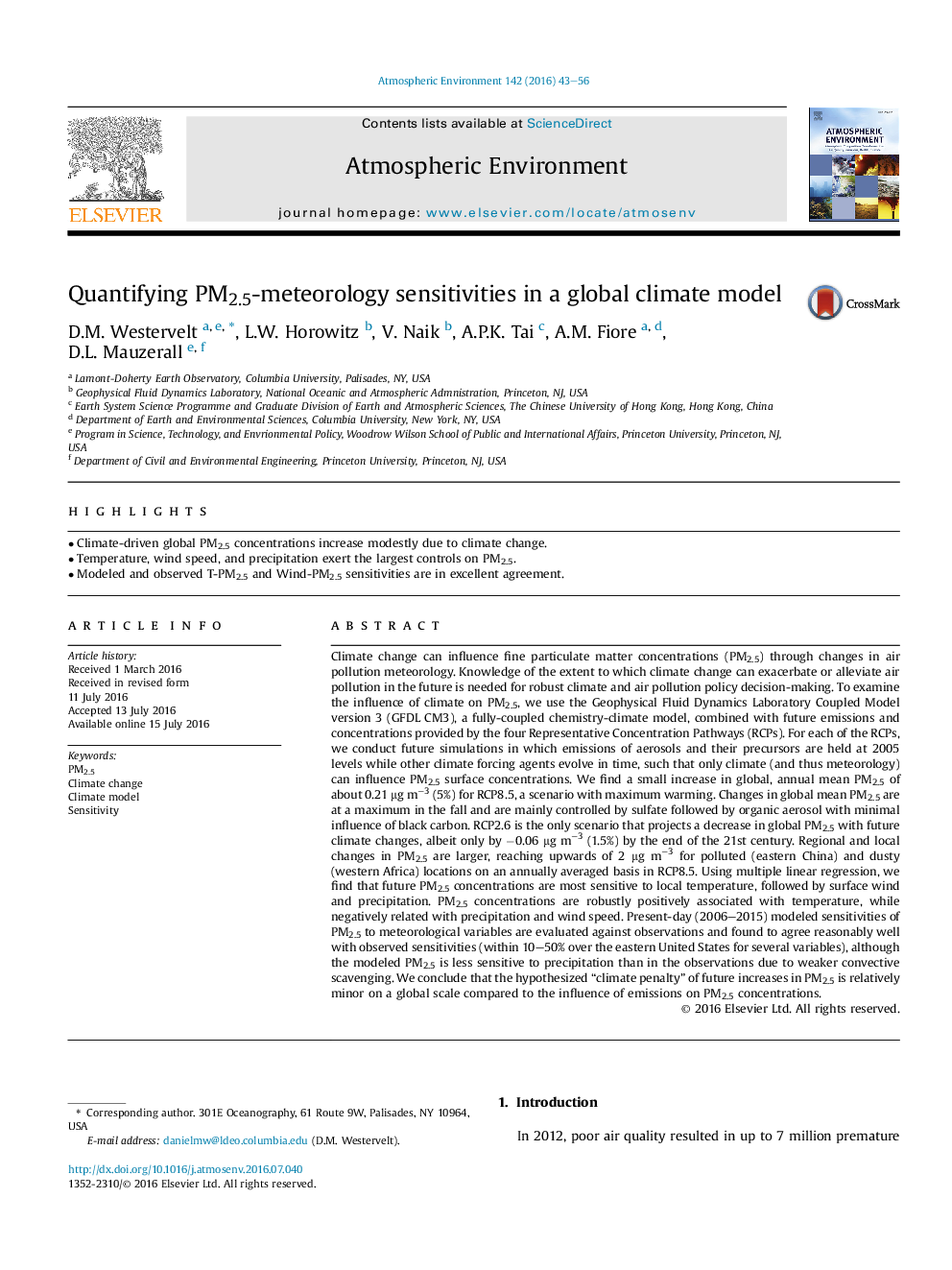| کد مقاله | کد نشریه | سال انتشار | مقاله انگلیسی | نسخه تمام متن |
|---|---|---|---|---|
| 6335728 | 1620332 | 2016 | 14 صفحه PDF | دانلود رایگان |
عنوان انگلیسی مقاله ISI
Quantifying PM2.5-meteorology sensitivities in a global climate model
دانلود مقاله + سفارش ترجمه
دانلود مقاله ISI انگلیسی
رایگان برای ایرانیان
موضوعات مرتبط
مهندسی و علوم پایه
علوم زمین و سیارات
علم هواشناسی
پیش نمایش صفحه اول مقاله

چکیده انگلیسی
Climate change can influence fine particulate matter concentrations (PM2.5) through changes in air pollution meteorology. Knowledge of the extent to which climate change can exacerbate or alleviate air pollution in the future is needed for robust climate and air pollution policy decision-making. To examine the influence of climate on PM2.5, we use the Geophysical Fluid Dynamics Laboratory Coupled Model version 3 (GFDL CM3), a fully-coupled chemistry-climate model, combined with future emissions and concentrations provided by the four Representative Concentration Pathways (RCPs). For each of the RCPs, we conduct future simulations in which emissions of aerosols and their precursors are held at 2005 levels while other climate forcing agents evolve in time, such that only climate (and thus meteorology) can influence PM2.5 surface concentrations. We find a small increase in global, annual mean PM2.5 of about 0.21 μg mâ3 (5%) for RCP8.5, a scenario with maximum warming. Changes in global mean PM2.5 are at a maximum in the fall and are mainly controlled by sulfate followed by organic aerosol with minimal influence of black carbon. RCP2.6 is the only scenario that projects a decrease in global PM2.5 with future climate changes, albeit only by â0.06 μg mâ3 (1.5%) by the end of the 21st century. Regional and local changes in PM2.5 are larger, reaching upwards of 2 μg mâ3 for polluted (eastern China) and dusty (western Africa) locations on an annually averaged basis in RCP8.5. Using multiple linear regression, we find that future PM2.5 concentrations are most sensitive to local temperature, followed by surface wind and precipitation. PM2.5 concentrations are robustly positively associated with temperature, while negatively related with precipitation and wind speed. Present-day (2006-2015) modeled sensitivities of PM2.5 to meteorological variables are evaluated against observations and found to agree reasonably well with observed sensitivities (within 10-50% over the eastern United States for several variables), although the modeled PM2.5 is less sensitive to precipitation than in the observations due to weaker convective scavenging. We conclude that the hypothesized “climate penalty” of future increases in PM2.5 is relatively minor on a global scale compared to the influence of emissions on PM2.5 concentrations.
ناشر
Database: Elsevier - ScienceDirect (ساینس دایرکت)
Journal: Atmospheric Environment - Volume 142, October 2016, Pages 43-56
Journal: Atmospheric Environment - Volume 142, October 2016, Pages 43-56
نویسندگان
D.M. Westervelt, L.W. Horowitz, V. Naik, A.P.K. Tai, A.M. Fiore, D.L. Mauzerall,